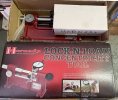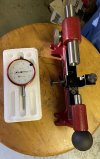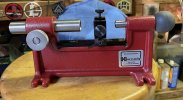462
California's Central Coast Amid The Insanity
I've been thinking about experimenting with a concentricity tool, but the price of a new one is more than my Socialist Security discretionary budget allows, and I quit eBay and Gunbroker two decades years ago.
The RCBS casemaster gauging tool seems to be the most featured, however I'm open to other brands. With that in mind, what do you no longer need/want and the price?
Thank you.
Michael
The RCBS casemaster gauging tool seems to be the most featured, however I'm open to other brands. With that in mind, what do you no longer need/want and the price?
Thank you.
Michael
Last edited by a moderator:




